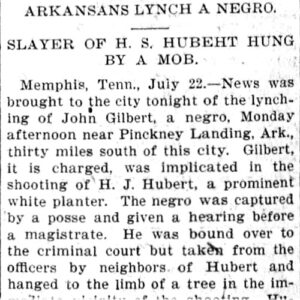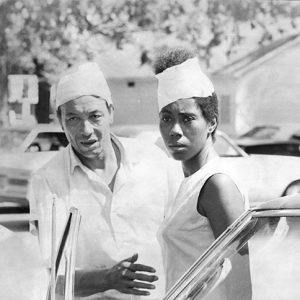County: Crittenden - Starting with G
Garland, Mamie Odessa Hale
Gathings, Ezekiel Candler “Took”
George Berry Washington Memorial
Gilbert, John (Lynching of)
 John Gilbert Lynching Story
John Gilbert Lynching Story
Gilmore (Crittenden County)
Great Balls of Fire!
Green, Steve
Greenock (Crittenden County)
 Greenock Land for Sale
Greenock Land for Sale
Greer, William Ezra
 Ezra and Jackie Greer
Ezra and Jackie Greer
 Greyhound Racing
Greyhound Racing




